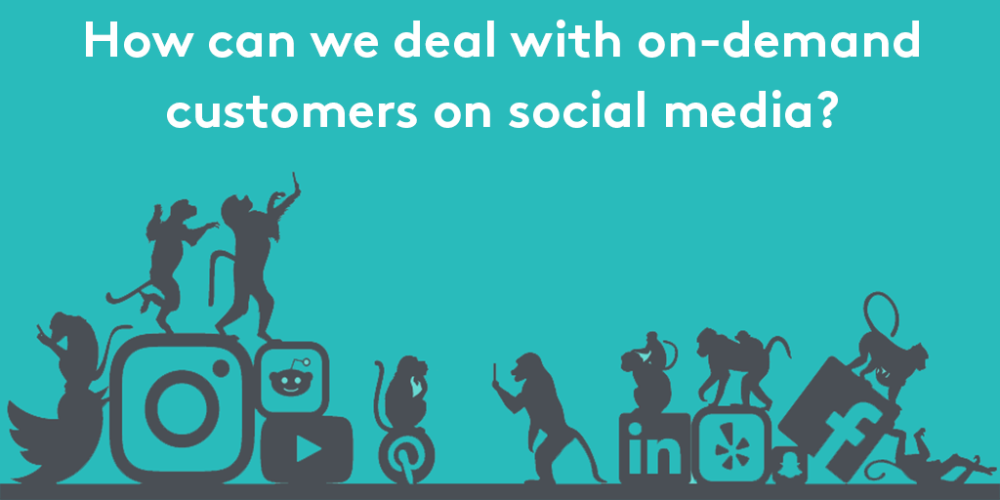How can we deal with on-demand customers on social media?
15 Jun 2017

During this blog, we’ll walk through key points to help those managing social media devise a strategy to help deal with increasingly more demanding and needy customers.
By using social media monitoring, we’ll be able to keep ahead of the game and meet customers demands. This is becoming increasingly important since customers are becoming more demanding by the day. There once was a time where we would send complaints and queries in the post and we wait weeks for a response. Now, many customers are unhappy if they have to wait 24 hours for a reply, more than 30 minutes for their takeaway order, or a week for their online shopping delivery.
So what does this mean for us marketing professionals?
- Clients expect their complaints and questions to be responded to quickly on social media: According to a study published in marketingland, 72% of consumers expect brands to respond to Twitter complaints within an hour.
- Opportunity: If we can respond quickly to customers, they may choose us over competitors – Lithium Technologies explains that if we deliver timely responses to users, 43% are more likely to recommend us to a friend or family member, 42% are willing to give us praise on social media, and 35% are more likely to buy from us.
- Difficulty: In stretched teams, it may be difficult to respond to customers as quickly as they demand, as well as ensure we don’t miss any complaints
So how can we deal with on-demand/ needy customers?
Use a social media monitoring tool to keep on top of incoming mentions
The first way we can meet the needs of demanding customers is by quickly responding to them. Time is the most important thing here. Social media monitoring accounts can be set up to receive alerts when we get an ‘abnormal’ amount of mentions compared to usual. This can be used to flag either a viral post or that there may be a problem with our service. Once we respond we can then use social media monitoring to assess how well our response has been received, and track whether the issue has caused a lasting impact to our brand.
We all know how frustrating it can be when we make a complaint or ask a question, and we’re then passed from person to person. By partnering social media monitoring with an engagement tool we can easily assign inbound messages to team members to ensure 1. No message gets missed, 2. That only one person is dealing with each case, and 3. They person managing the case is best equipped to do work on this area.

Offer an omnichannel experience
Use Facebook, Twitter, email, a website contact form and have a telephone number so users have a number of touchpoints to reach out. We should also ensure that our website and content is viewable on a range of devices. To add to this, offer purchasing choices on a number of channels. For example, many restaurants and takeaways offer their audience a number of channels to make food orders, such as their website, Facebook Messenger, Deliveroo, JustEat, telephone, app and in-store.

By offering all of these potential touch points, we can offer convenience to our customers, who want to be able to order their food on the tube on the way home, or raise a complaint in the few seconds they have spare on their lunch break.
We’d advise brands to map out each touchpoint their audience is likely to take, so they can offer a convenient and cohesive experience.
Keep it simple
If a customer has to spend 30 minutes looking for a way to contact you, they’re going to get annoyed. Every element of the customer journey should be effortless. Many online retailers allow us to save our payment details so that we can simply add the item to the basket, click buy and then our items will be on their way.
The #nomakeupselfie raised £8 million for Cancer Research UK in 6 days. Part of the reason why this campaign was so successful was that it was so easy to donate – one simply texted a number and the money would be taken from their next phone bill. Perhaps if the audience had to go to a specific website, the campaign would have been less successful.

Some of the many celebrities who participated in #nomakeupselfie
Well, that’s about it for today!
Find out more about how social media monitoring can be used to deal with tricky or demanding customers.

Please login to comment.
Comments